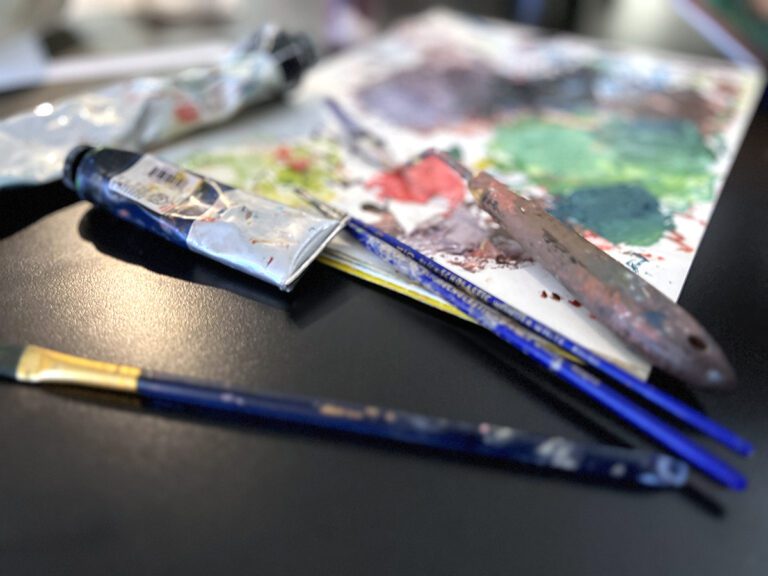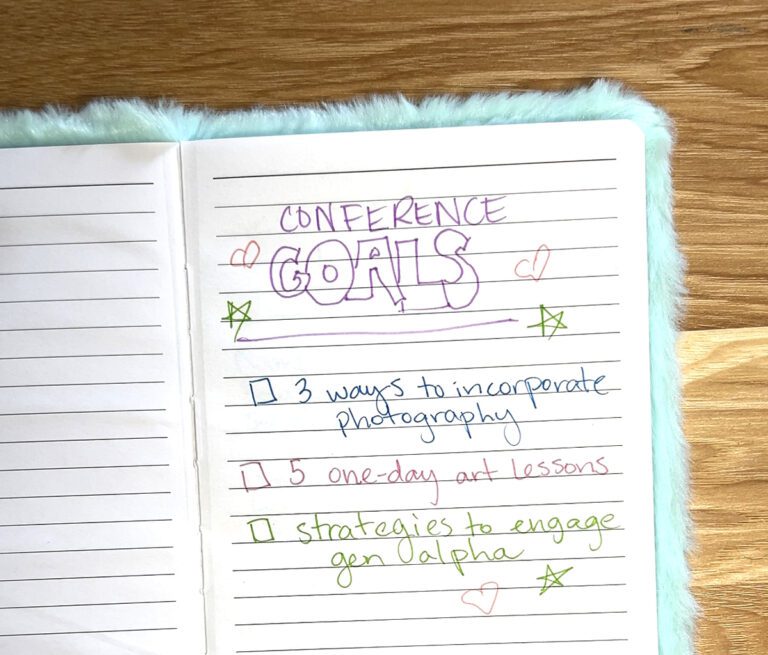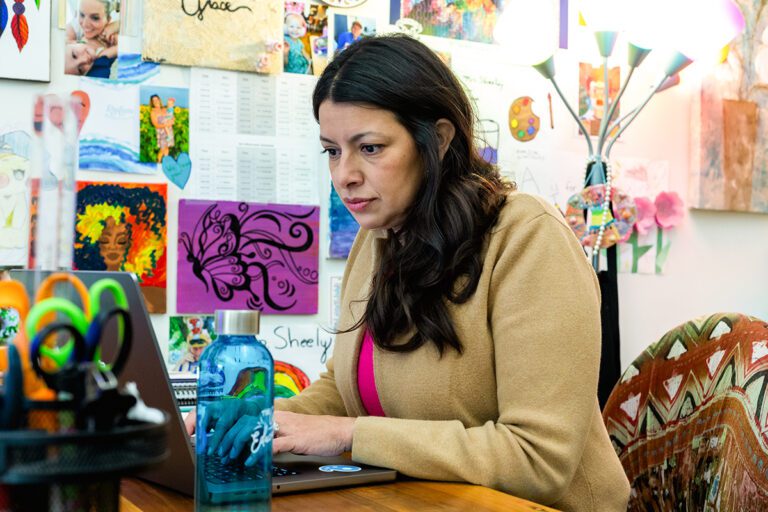Chances are if you have conducted formal research as an art educator, it is not only something your students will benefit from but other teachers in the field will as well. There are different ways to share what you have learned through research.
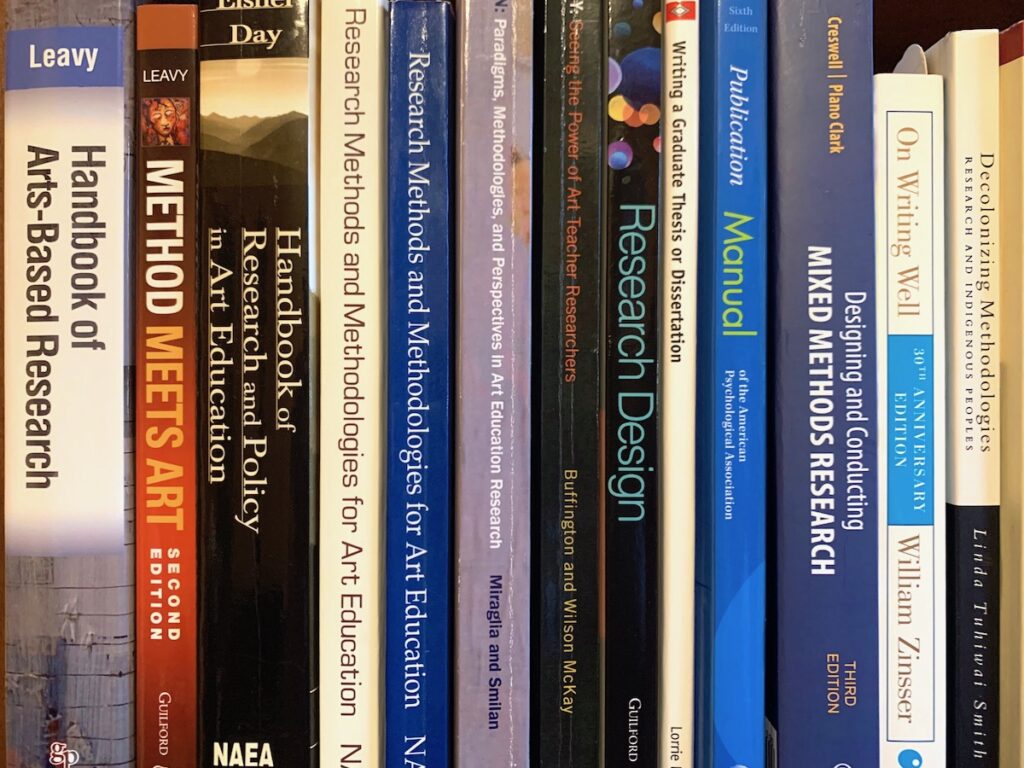
Here are 7 steps you can take to share your research with other art educators.
1. Make sure you have the appropriate permissions.
Talk with your building principal or district leadership. Most districts have policies about research and publication. When you conduct formal research in a K-12 classroom, it’s important to communicate with participants and their guardians regarding informed consent. Informed consent explains the possible benefits and consequences of participating in research.
8 Habits of Successful Researchers
This is also a moment to indicate if you will or will not use pseudonyms in writing about the results of your research. Finally, if student work or work by professional artists is important to share as part of your research, make sure you have clear permission to submit it for reproduction and distribution through publication.
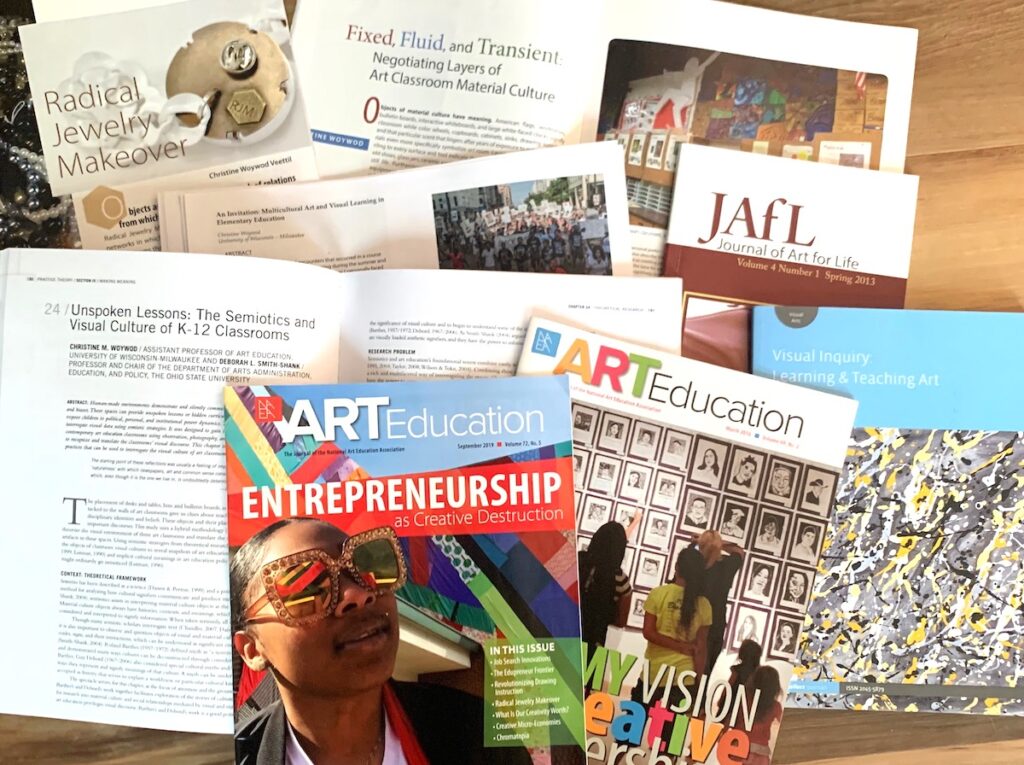
2. Understand the formats to find your best fit.
Art education research is published in a variety of formats.
- Traditional formats: These include peer-reviewed journals, magazines, and books contracted with publishers. One of the benefits of traditional formats is that if accepted, you will get to interact with an editor. Additionally, you will have the recognition of your work being vetted by peers, possibly promoted through a publisher or professional organization, and your work will be searchable through formal research databases. However, it is important to remember the process for traditional peer review and print publication can easily be lengthy. Often this is a year-long process from initial submission to distribution of the final publication. Also, typically when you submit a manuscript to a traditional publication, it should not be under review elsewhere.
- Self-published formats: This may include blogs, websites, and self-published works ranging from books to zines. One of the benefits of self-published formats is that you, as the author, control the speed at which things happen. In most cases, this means a much quicker pace than traditional formats. Blogs and websites specifically offer the possibility of updating and adding content as needed. Potential challenges are that as the creator, you are solely responsible for the promotion and distribution of your own work and any costs associated with the format you are using.
- Peer-Reviewed Journals: Peer-reviewed journals, specific to the field of art education, examine theory and practice. Submissions are usually open to all, and occasional calls for papers may focus on specific themes or topics. Manuscripts are written in APA format as authors make connections to other scholarly work, contribute to a larger dialogue in the field, and make recommendations for practice. Examples: Art Education, Arts Education Policy Review, Studies in Art Education, Visual Arts Research, and Visual Inquiry: Learning and Teaching Art.
- Magazines: Magazines specific to the field of art education address lesson ideas and current topics related to teaching. Submissions may be by invitation, by hired author, or open when there are calls for articles on specific topics. Articles are typically shorter than in peer-reviewed journals and are generally distributed within a shorter time table. Examples include School Arts, AOEU Magazine, and Professional Organization Newsletters such as Art Times.
- Teacher-Created Blogs: Teacher created blogs also include lesson ideas and topics related to the practice of art education. Publication in this format is controlled by an individual or small group committed to writing regular entries and promoting their own work. Teacher-created blogs are usually more conversational in tone. Examples: Art Class Curator, Art is Basic, Cassie Stephens, Mini Matisse, and Thoughts on Arting.
3. Read examples of other works to notice organization and style.
Once you have decided on the format for publishing, examine how the authors of successful works organize information about their research. Peer-reviewed work in the field of art education follows APA format, which you can learn about through AOEU Library Services. You will notice connections to theory and current scholarship in the field as the author makes a case for the importance of the research and the recommendations they share in the paragraphs that follow. In contrast, work in an online magazine will feel intentionally brief and likely present important conclusions or recommendations for practice first. You may see hyperlinks to other resources, rather than a final reference list in APA format.
4. Focus on the main point.
After being immersed in a research project, not only is there a lot of information to share, but you also really care about it! As a result, it can be challenging to figure out how to take pieces of a capstone, thesis, or dissertation and prepare it for publication. Rather than trying to edit down a larger paper you have already written, start a fresh document that answers the question: What do I want other teachers to learn?
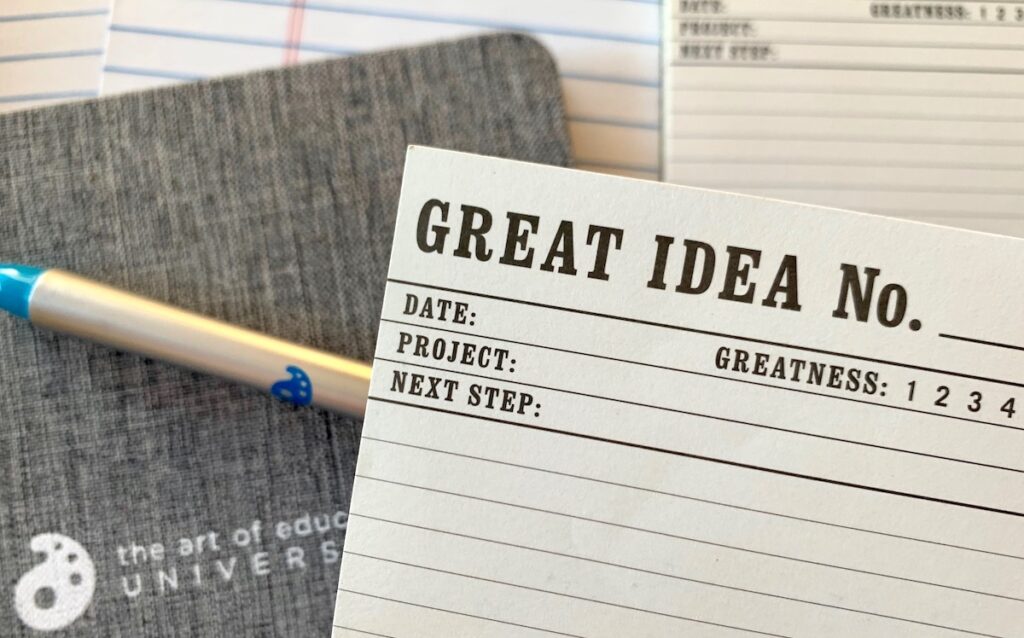
5. Build your outline and flesh out your thoughts.
After you are focused on what you want other teachers to learn, build your outline. Having a very clear structure can make it easier for readers to engage with your work. Write out the main points you want a reader to notice as they follow your thinking and then elaborate.
How Action Research Can Improve Your Teaching
6. Ask a peer to review your work before submitting it or self-publishing.
After being close to a project for some time, it can be difficult to perceive how your writing might be understood by someone who is not familiar with your research. Before you submit your work for review or self-publish, ask trusted peers to read your work and offer critical feedback. Whether it is a former classmate from graduate school or another teacher at your school, a fresh perspective can really help. This person might catch errors and point out where you need to be more clear in your communication. They can also help you find areas where you can elaborate, so others will better understand your work.
How to Look at Research with a Critical Eye
7. Act on feedback.
If you are submitting to a traditional publication, feedback will come from an editor or an editor and peer reviewers. Act on that feedback, address any concerns, and communicate what actions you took when you resubmit your work. Do not get discouraged if you are asked to revise and resubmit your work. Editors and peer reviewers want to see work published, and they are aiming to help you make your work stronger. In self-publishing, feedback can come through comments offered verbally as you engage with people, or on social media as work is shared. Consider acting on what is said if it helps you grow in your work or reach more people.
Research in the field of art education is crucial to the advancement of best practice. When it comes to publishing your research, you have a lot of different options. Carefully considering the best fit will help you to add your voice to this important conversation.
Why is it important to share your research?
What examples of research published by other art teachers have you found to be valuable, memorable, or inspiring?
Magazine articles and podcasts are opinions of professional education contributors and do not necessarily represent the position of the Art of Education University (AOEU) or its academic offerings. Contributors use terms in the way they are most often talked about in the scope of their educational experiences.



